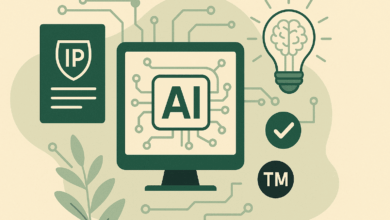
The future of the workplace hinges on digital skills, exemplified by the government’s recent goal for one in ten civil servants to have a digital role by 2030. Yet, as of 2024, only 21% of Senior Civil Servants felt confident in digital and data essentials. This gap highlights a significant shortfall in digital readiness, with many civil servants lacking even basic digital proficiency. Without the necessary skills, the Civil Service remains unprepared to leverage AI effectively, putting modernisation efforts at risk.
This skills gap extends beyond the public sector. In the private sector, only 23% of leaders report that all of their employees have well-developed AI skills. As AI tools evolve, businesses are struggling to effectively integrate them into workflows, ultimately reducing return on investment.
The root of the problem lies in companies failing to develop their workforce’s AI competencies at scale. AI is the playbook, but without every player—tech and non-tech—knowing the moves, your team will struggle.
The risk of having an AI skills gap
Despite increasing investment in AI technology, adoption remains uneven across organisations. A significant barrier is inadequate AI training. In fact, 75% of organisations have had to pause or delay AI projects due to a lack of AI skills. Without equipping their teams with the right expertise, businesses cannot fully capitalise on AI’s potential.
This gap is not due to a lack of employee willingness. A recent survey found that while employees may be ready for AI, their leaders are not helping them unlock its potential. Only 31% had established employee training courses on how to use generative AI, for example.
Even the most advanced AI of today cannot operate without human oversight—and truly autonomous AI remains a distant prospect. Closing the AI skills gap is vital to enable organisations to accelerate innovation, improve efficiency, and remain competitive in an AI-driven economy.
How to bridge the gap
Some organisations have already started large-scale AI upskilling initiatives. The UK government has recognised the urgency of digital skills and introduced an upskilling plan for 7,000 Senior Civil Servants and launching the NHS Digital Academy to educate NHS staff on basic digital and data competence.
Similarly, Deutsche Bank introduced an upskilling programme with Pluralsight, reaching 2,000 people in their technology organisation to provide them with in-depth technical knowledge and understanding around delivering solutions in the cloud.
Building AI skills throughout an organisation requires an upskilling plan that goes beyond video platforms, self-paced content, and turning employees loose to learn on their own. Unstructured learning risks employees focusing on irrelevant or outdated materials.
Instead, businesses should implement an AI development strategy that works in tandem with their overarching business goals. Successful AI skills development provides a formal, centralised learning hub for employees, incorporates hands-on application, and fosters a culture of learning that spans the entire organisation.
Here are three key strategies to ensure employees develop the AI competencies needed for success:
1. Include upskilling for AI in your budget
Skills development should be a fundamental part of AI strategy, not an afterthought. While 58% of organisations budget for AI skill development upfront, the remaining 42% determine an AI learning budget based on need. This reactive approach can hinder AI success.
Investing solely in AI technology without ensuring employees can use it effectively reduces its likelihood of success. Organisations should set aside a dedicated AI training budget from the start and reassess it quarterly to align with evolving AI demands.
2. Foster an AI learning culture
Create a culture of learning in your organisation by encouraging peer-to-peer learning and creating formal plans to share AI upskilling sessions and resources. This can include creating learning cohorts and Slack channels for learners to ask questions and get help from each other, hosting AI workshops or providing author talks to have open discussions with professionals.
3. Upskill both technical and non-technical teams
Everyone needs AI skills, regardless of whether they’re working directly with AI models, to make proper business decisions. After all, AI is now an integral part of any workflow and will only become more vital. However, only 19% of organisations have incorporated AI skills into day-to-day work and training across all departments.
To build AI skills throughout your organisation, develop learning paths tailored to roles and skill levels. Assess what skills are necessary for your AI implementation, what skills your teams already have and tailor upskilling accordingly.
What will we do with new AI skills?
AI integration will become as fundamental to workflows as Excel and Google Docs. Effective upskilling covers a range of applications, from building intelligent AI agents that connect to external tools to understanding ethical AI use and human oversight in hybrid work environments.
For technical employees like developers, security professionals and AI engineers, advanced skills will allow them to build AI- powered systems, navigate new security risks, develop AI models and decrease development time of non-AI projects.
However, AI literacy for non-technical employees is equally crucial. They also need to understand the technology on a basic level so they can spot misinformation, engage with AI in a safe, secure manner, properly prompt AI, interpret AI results, and understand key limitations of AI models.
To fully embrace the AI revolution, businesses need to do more than invest in the technology, they need to ensure their employees have the skills to use AI effectively. By prioritising AI training and fostering a culture of learning, organisations can bridge the skills gap and fully leverage AI capabilities. AI is a promising tool, much like the computer once was—and learning how to use it today will be just as essential for future success as learning to use a computer was pre-AI revolution.





